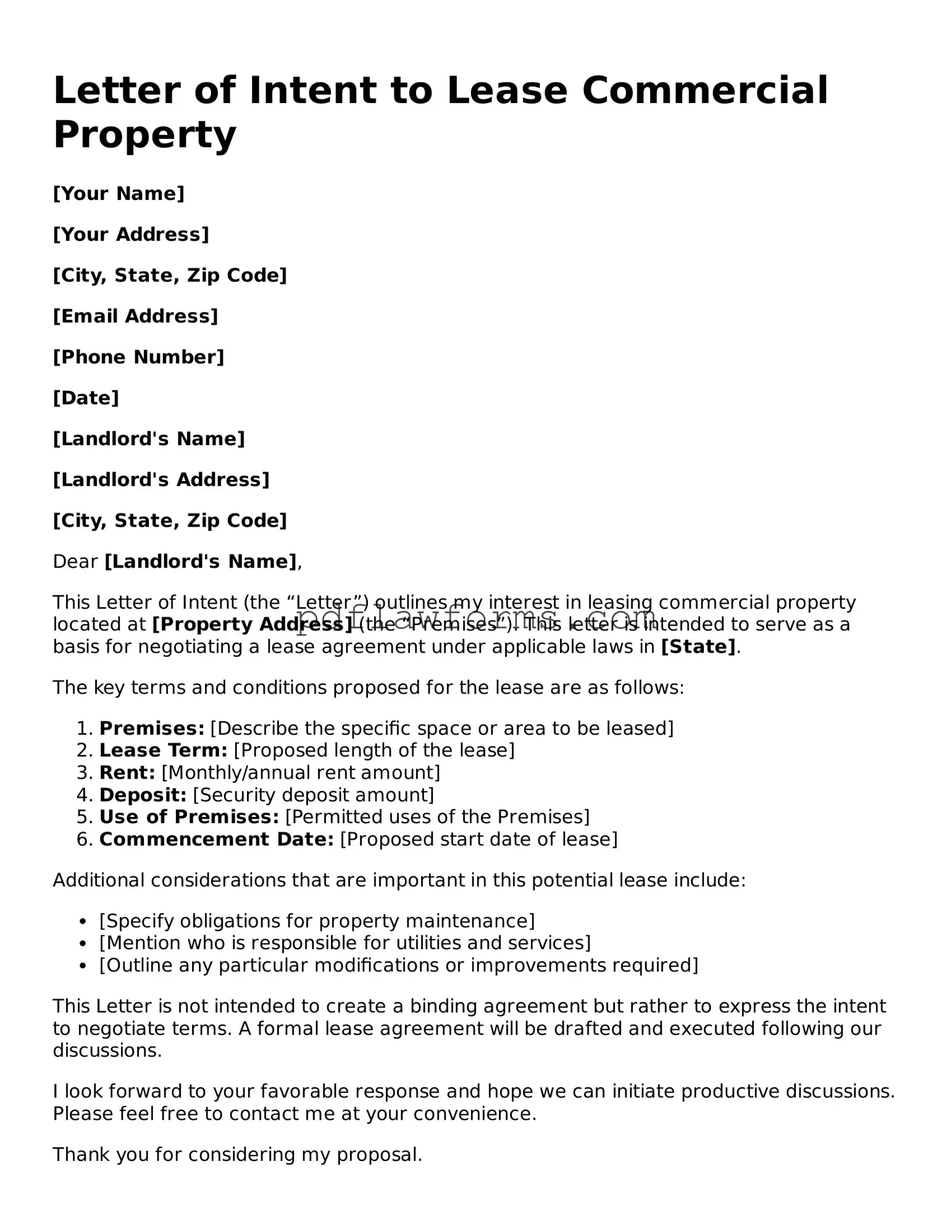Official Letter of Intent to Lease Commercial Property Form
A Letter of Intent to Lease Commercial Property is a preliminary document that outlines the basic terms and conditions under which a potential tenant intends to lease a commercial space. This form serves as a starting point for negotiations, helping both parties clarify their intentions before entering into a formal lease agreement. To get started on your leasing journey, fill out the form by clicking the button below.
Make My Document Online
